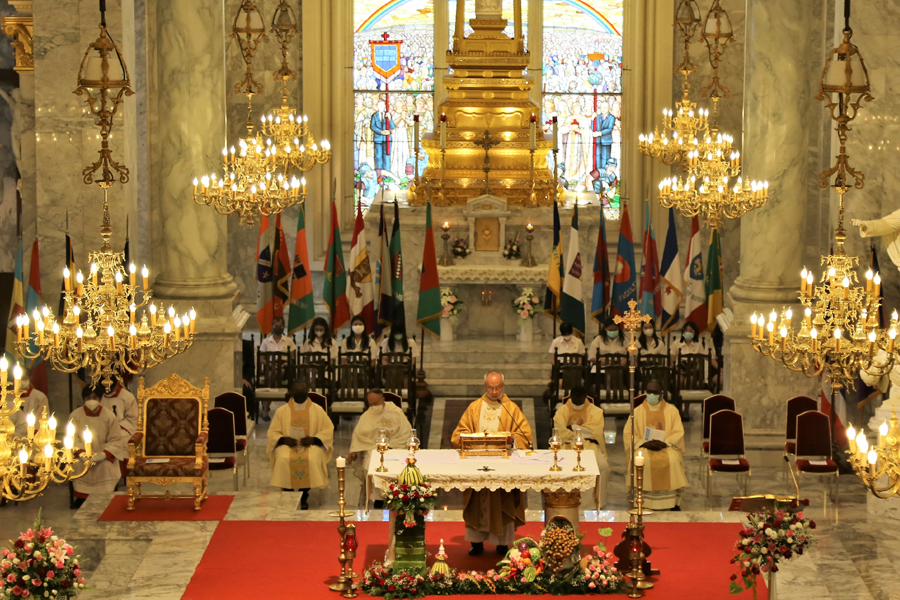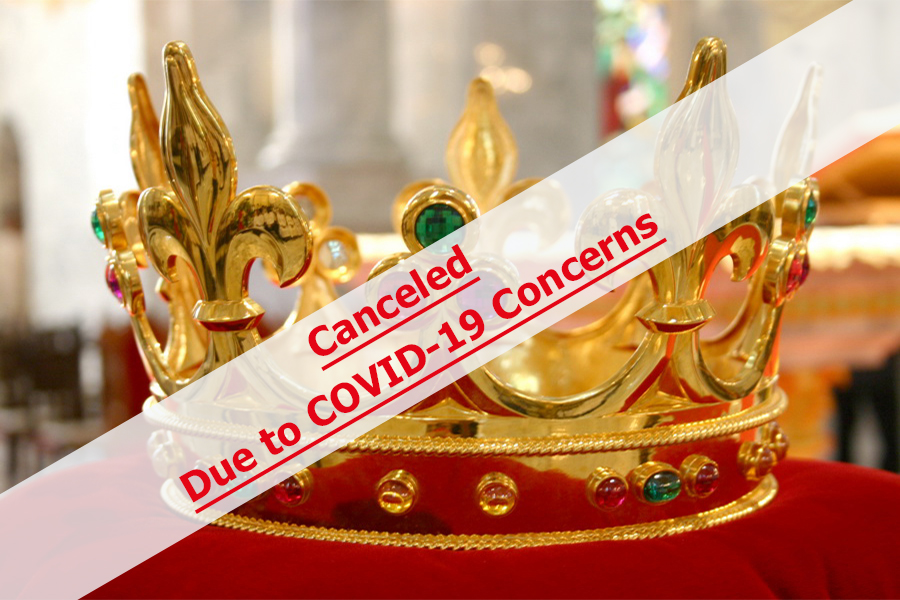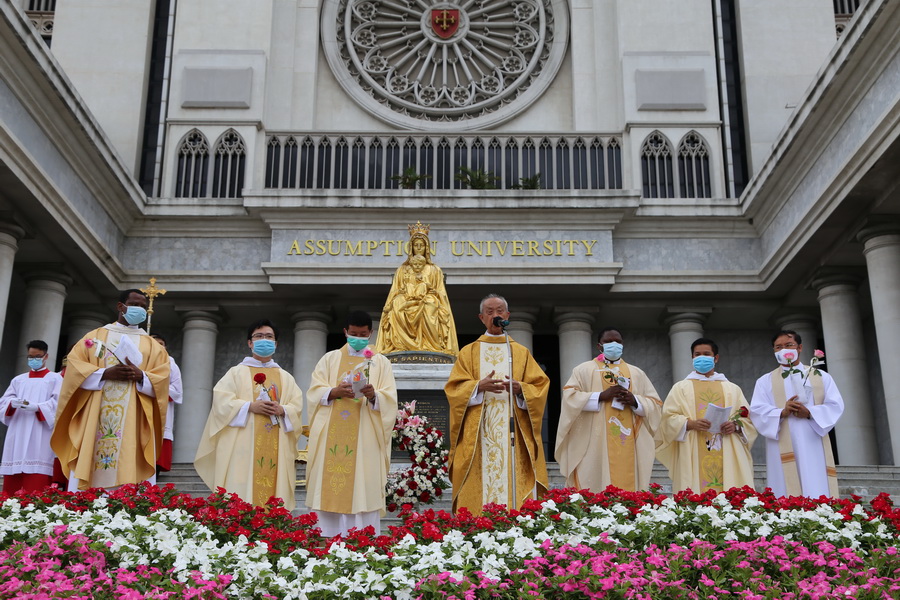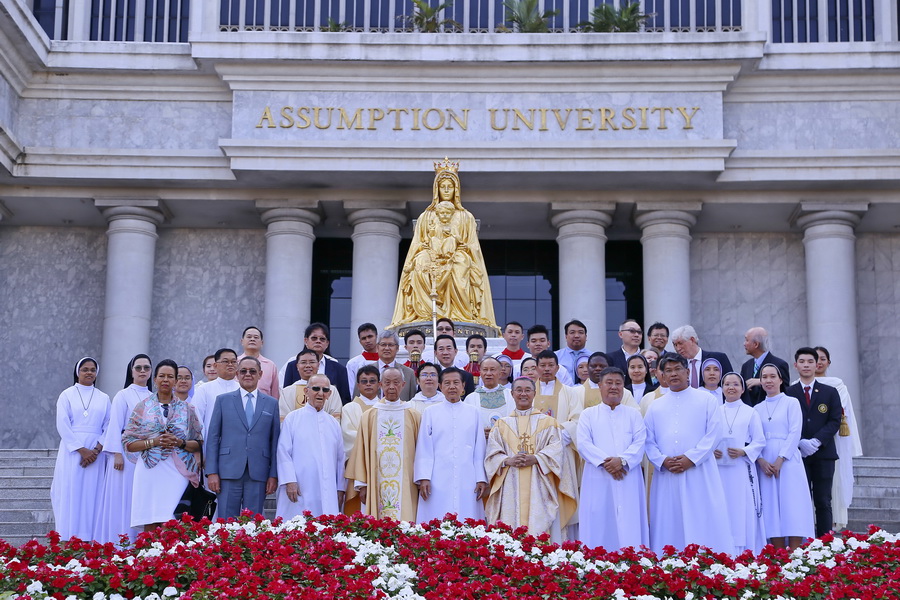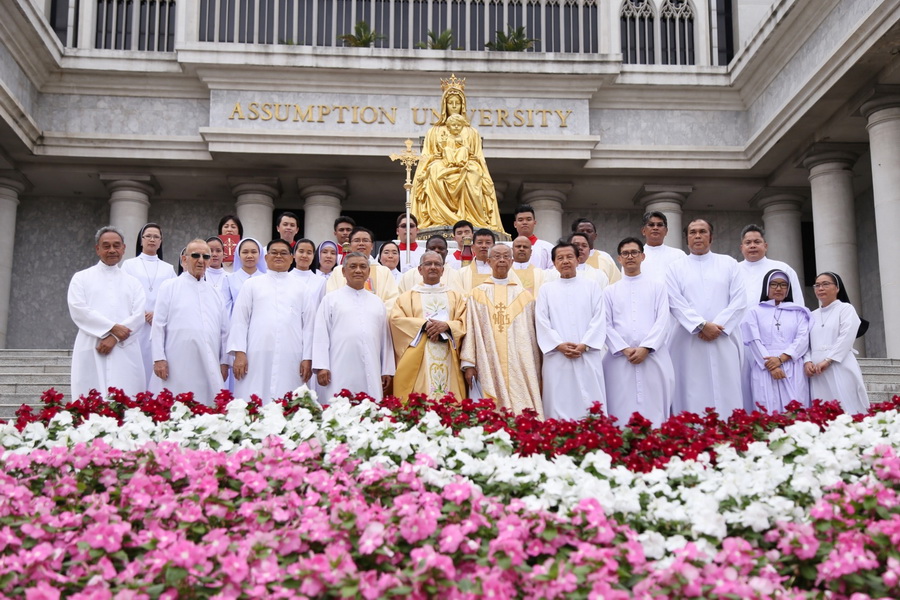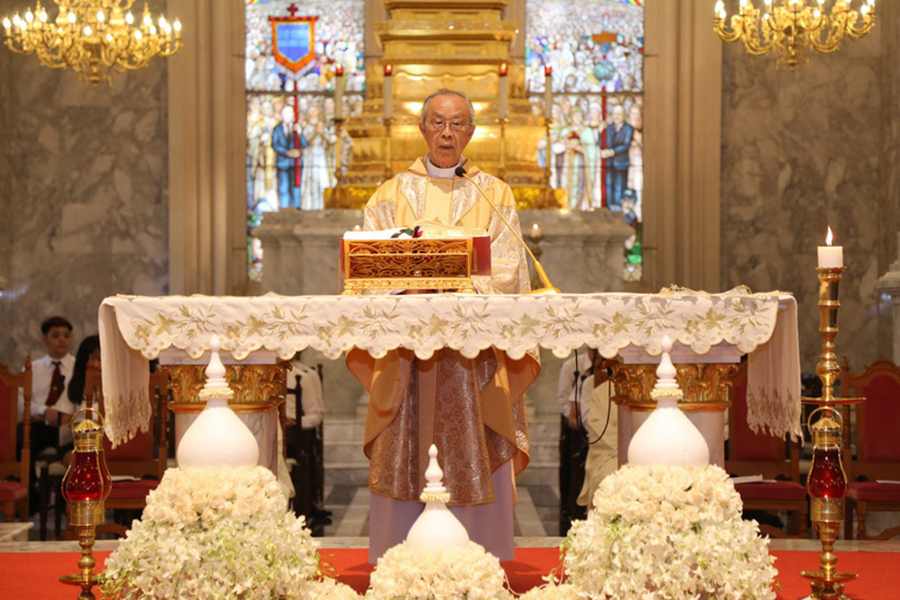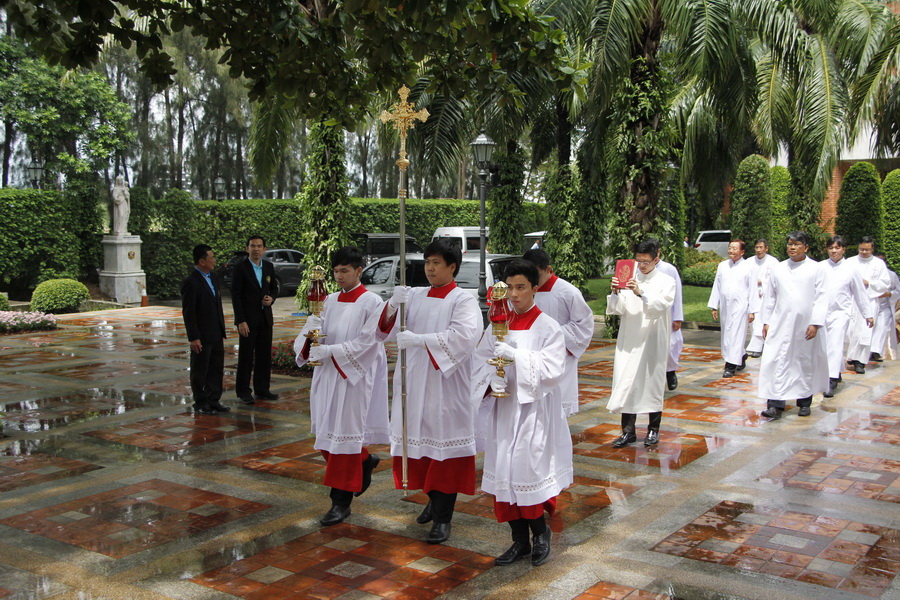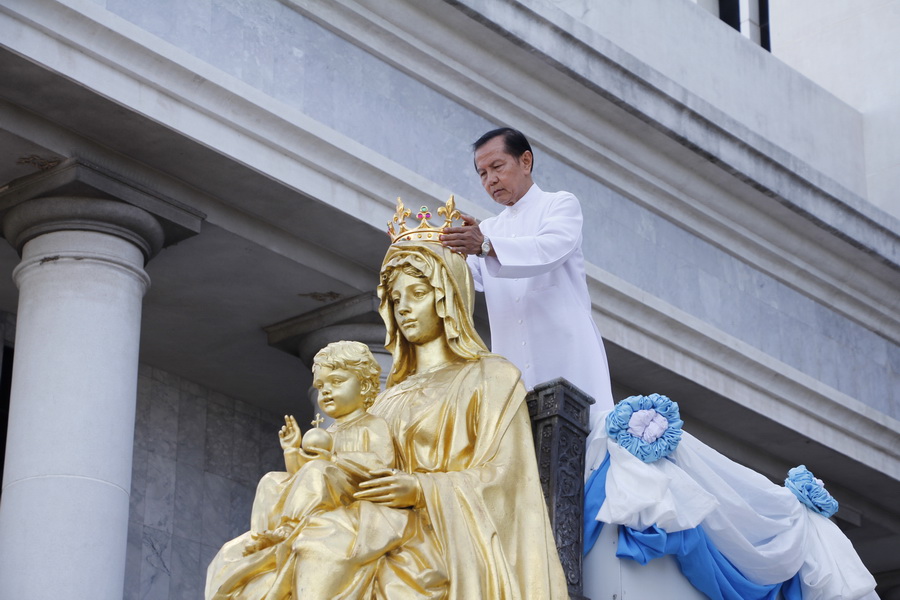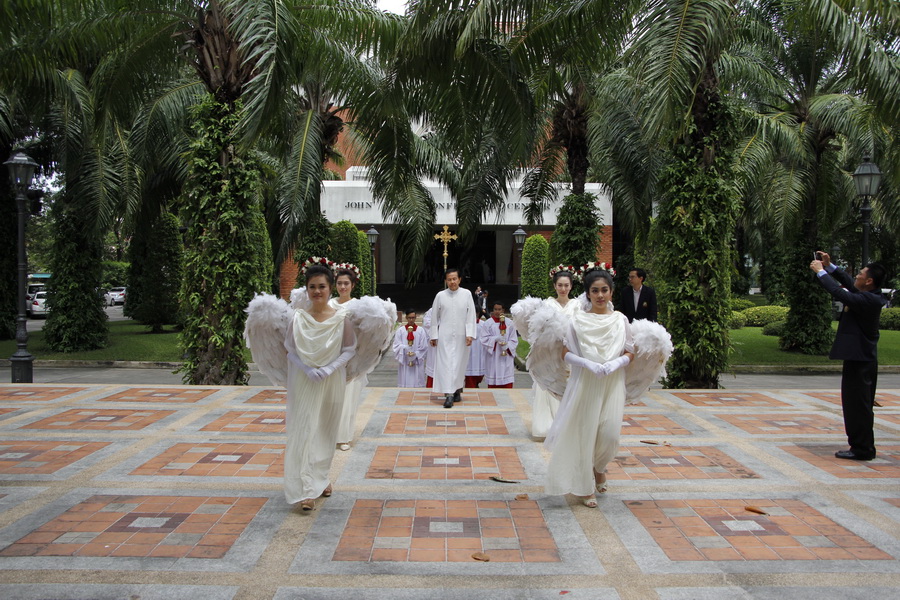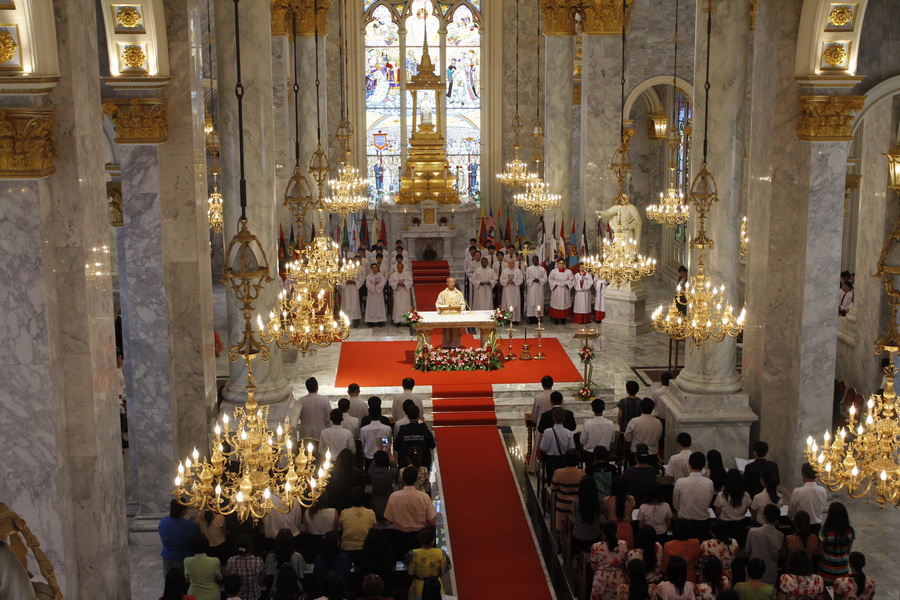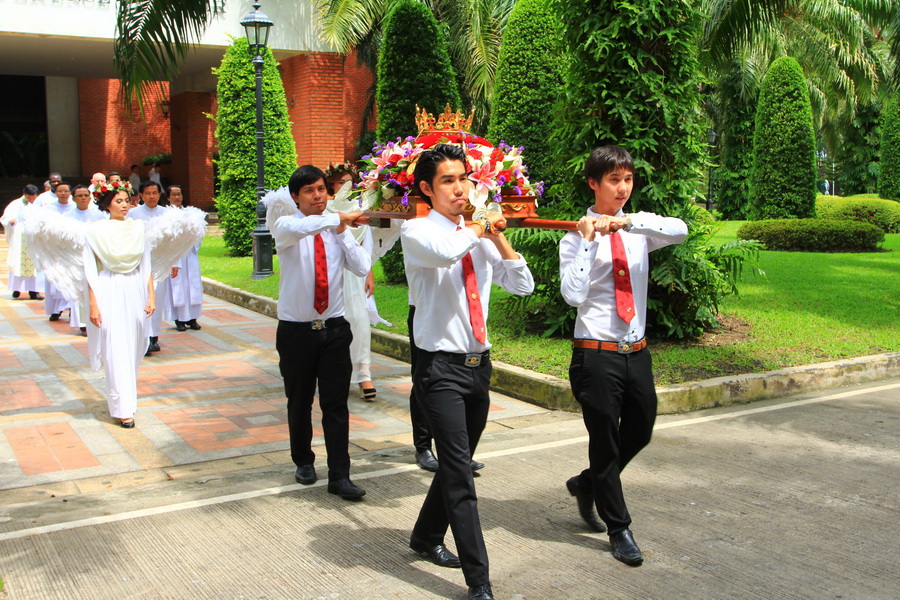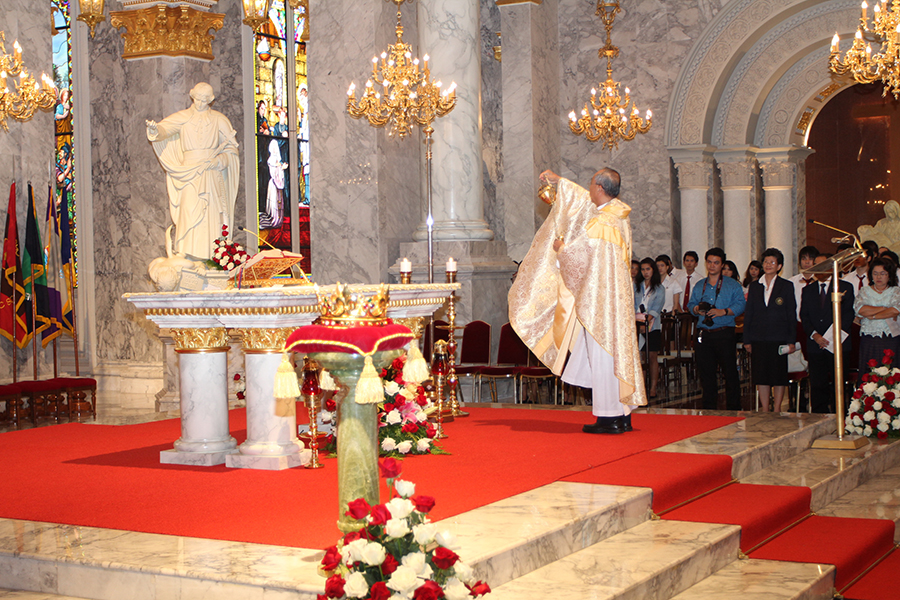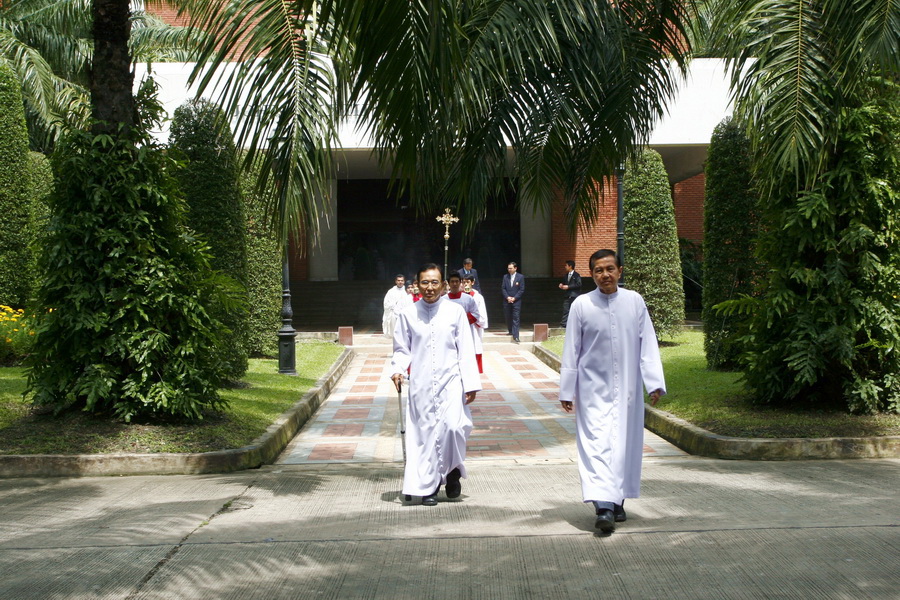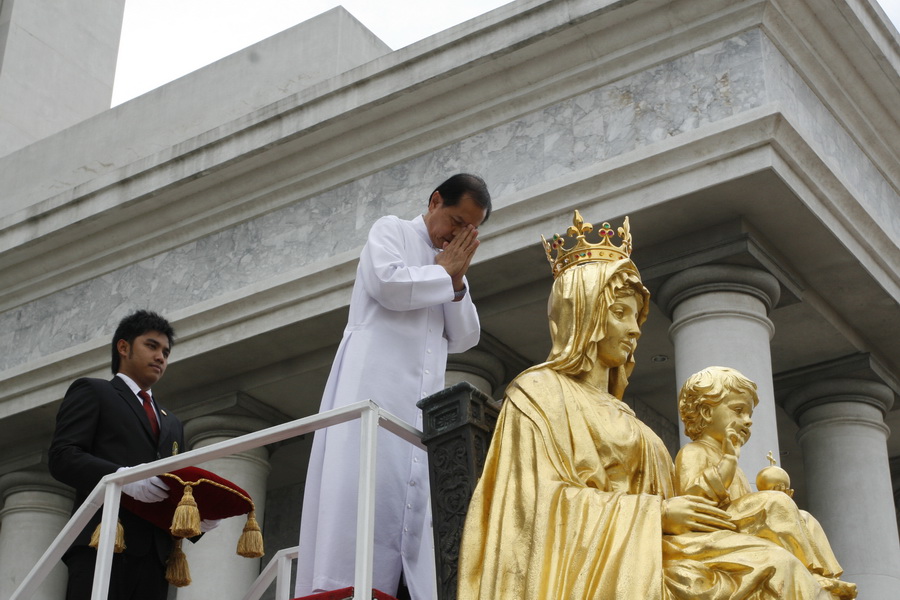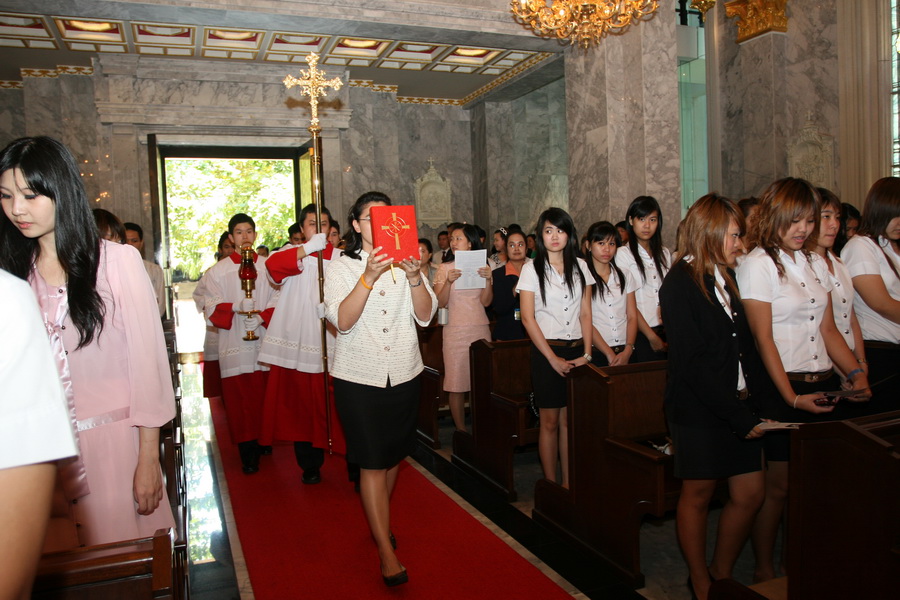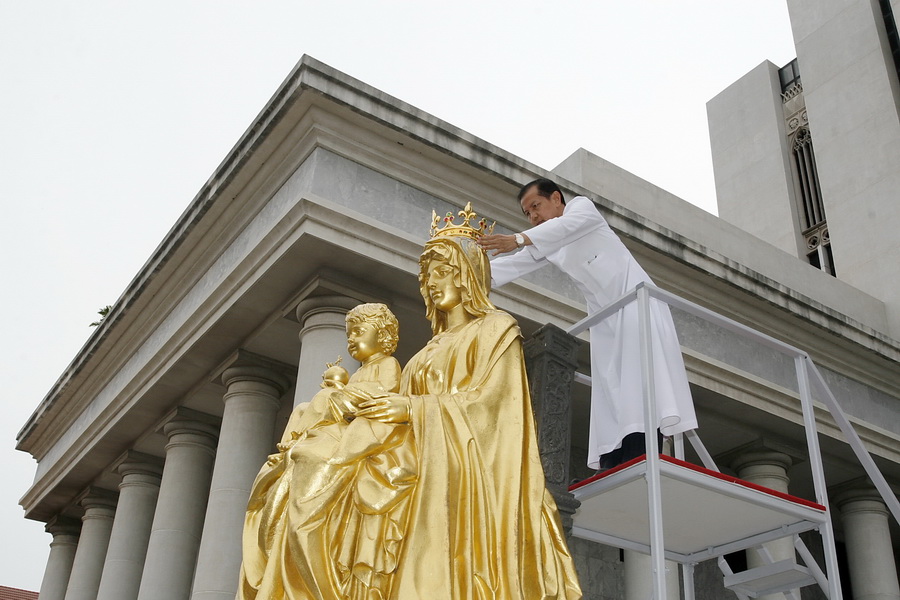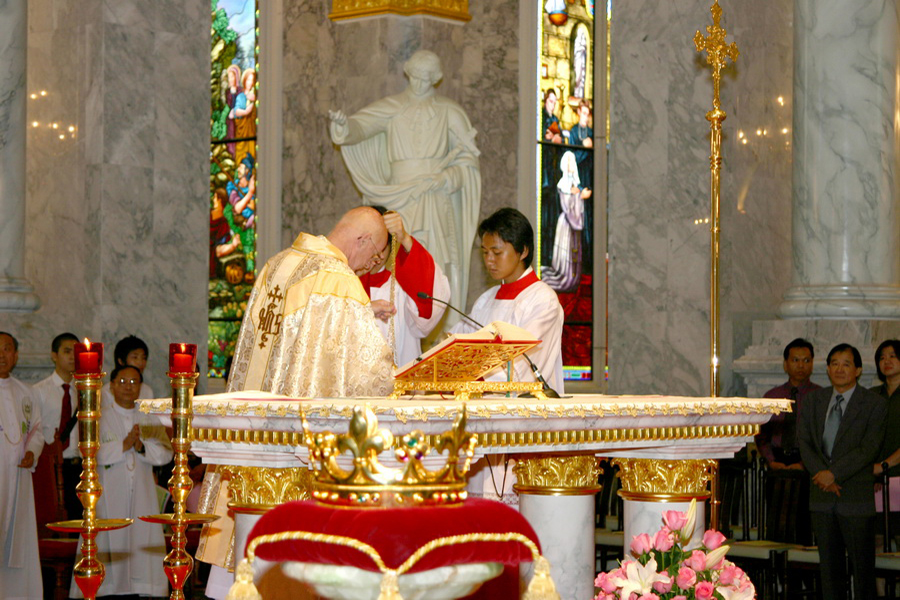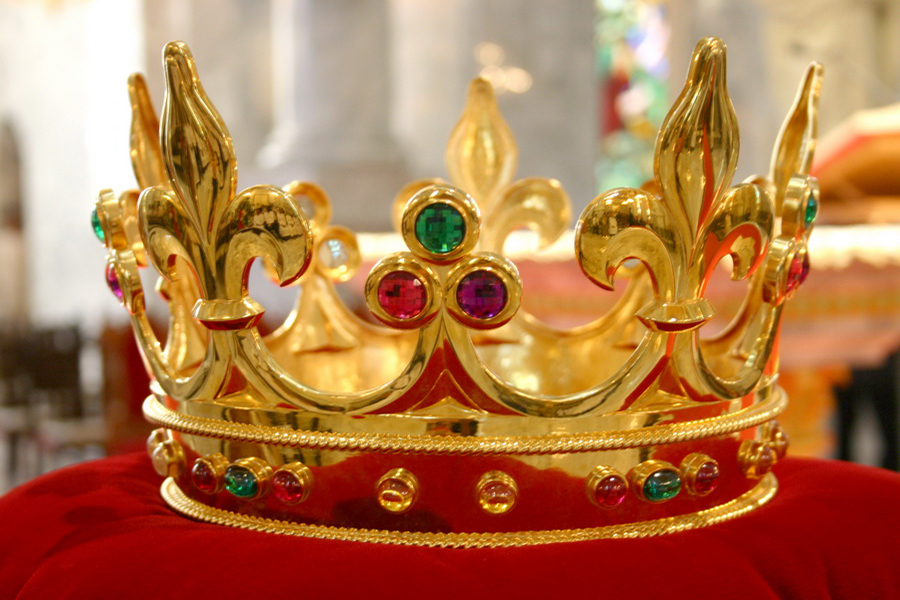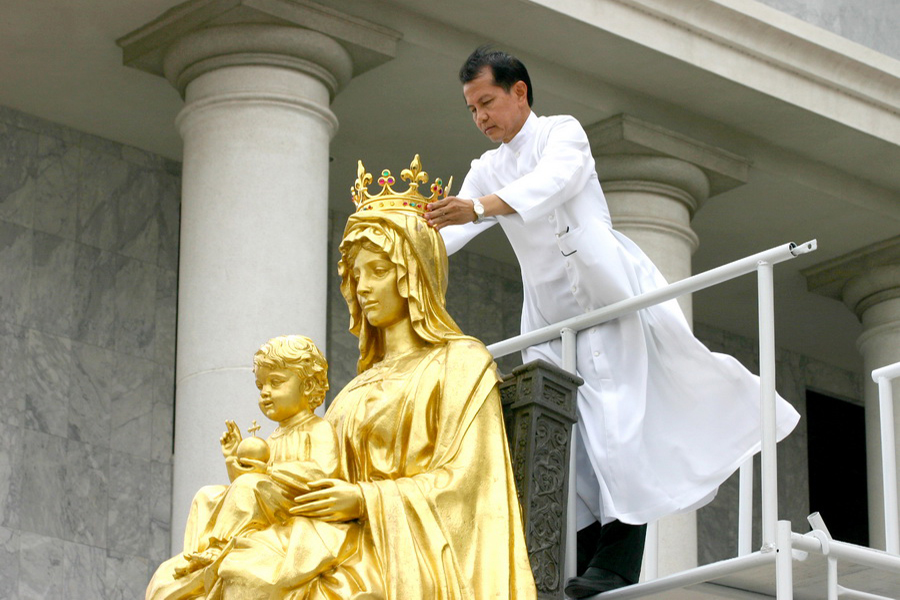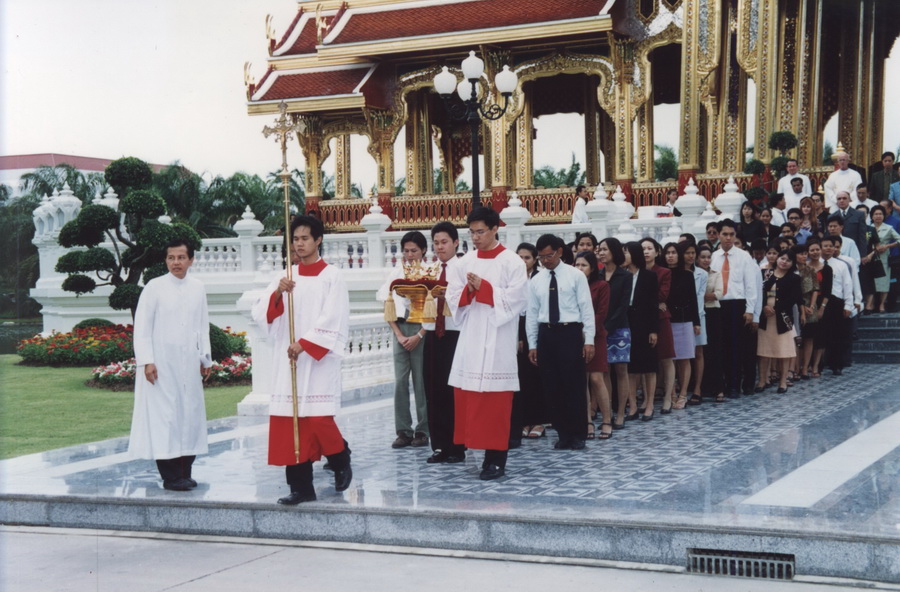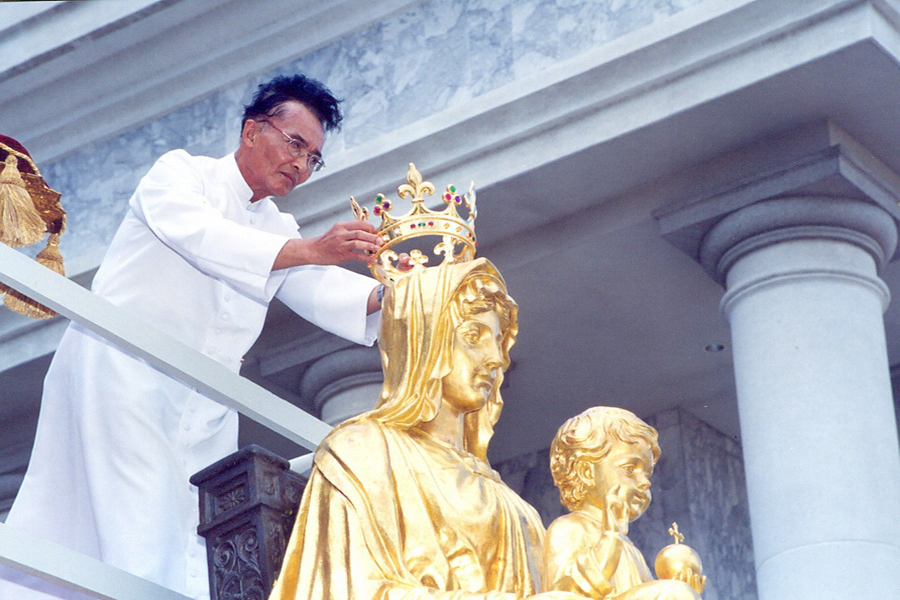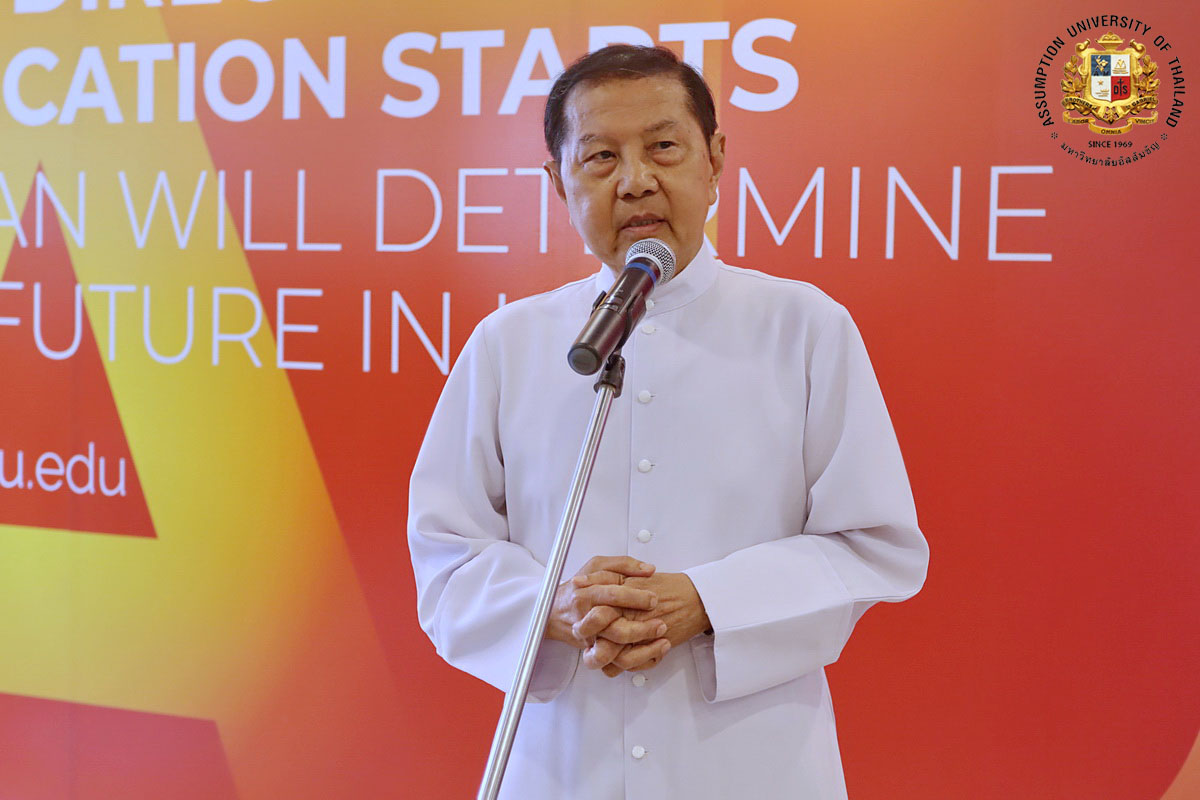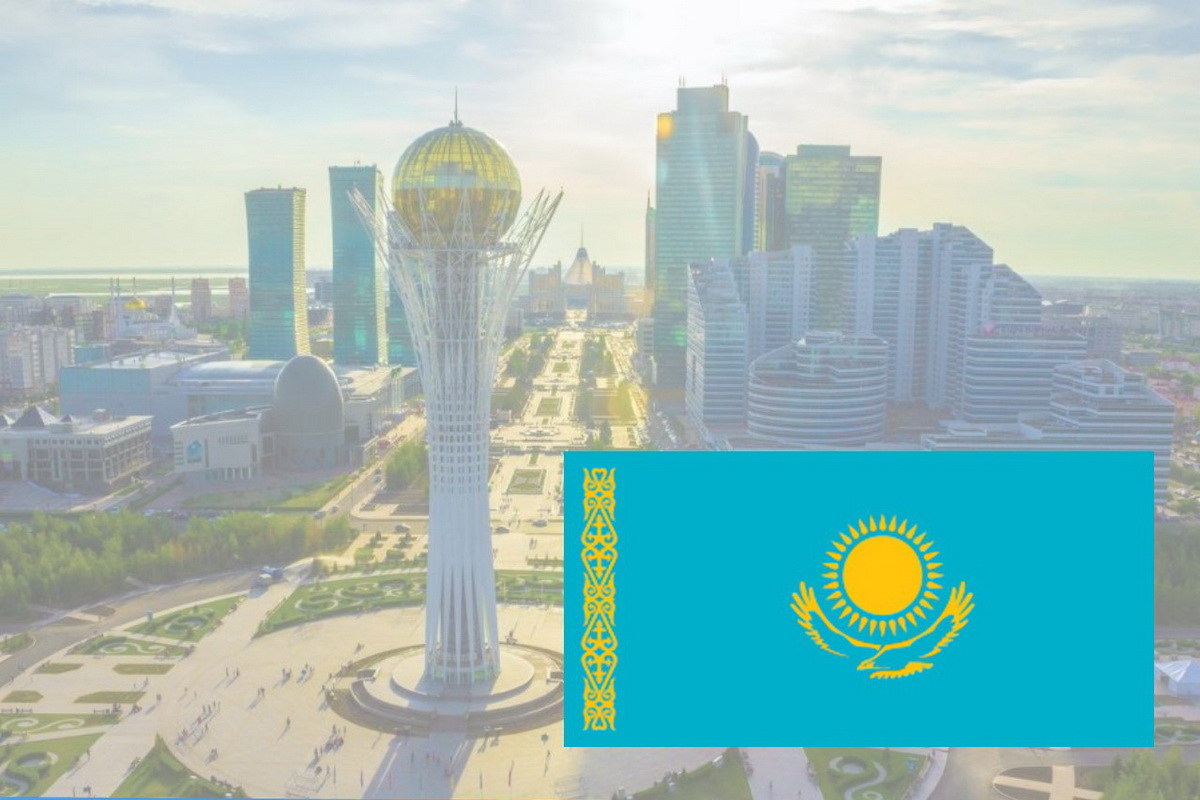ASSUMPTION DAY
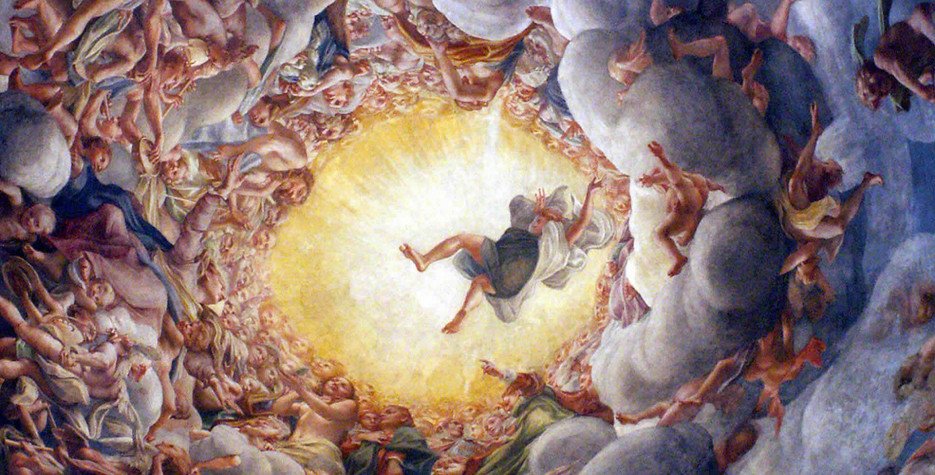
When is the Assumption of Mary?
The holiday is celebrated annually on August 15th. The Feast of the Assumption of Mary is a very important day in the Catholic religion - it is even called the 'Easter of the summer' in some parts of Europe.
Also known as the 'Dormition of the Virgin Mary', it is the principal feast of the Blessed Virgin, the mother of Jesus Christ. In countries such as Spain and Italy, it marks the start of the annual summer holidays, when many escape the heat of the cities to vacation on the coast or in the hills.
History of the Assumption of Mary
This feast commemorates two events - the departure of Mary from this life and the assumption of her body into heaven. The Church's official doctrine of the Assumption says that at the end of her life on earth Mary was assumed, body and soul, into heaven. Some mistakenly believe Mary "ascended" into heaven, which is incorrect according to the Bible. It was Jesus Christ who ascended into heaven, by his own power. But Mary was assumed or taken up into heaven by God.
Pope Pius Xll, in 1950, defined that Mary "after the completion of her earthly life...was assumed body and soul into the glory of Heaven." Her body wasn't allowed to corrupt nor was it allowed to remain in a tomb. Though there are claims by some cities about possessing her temporary tomb.
In the early Christian centuries relics of saints and those who gave their lives for the faith were jealously guarded and highly prized. Many cities claim the mortal remains of saints, both famous and little-known. But there are no records of Mary's bodily remains being venerated anywhere.
As this is a religious holiday, the Assumption is most commonly celebrated by devotees by attending mass, where the subject of the sermon is usually the Virgin Mary.
The Solemnity of the Assumption of the Blessed Virgin Mary
The Assumption of the Blessed Virgin Mary into Heaven is the bodily taking up of the Virgin Mary into Heaven at the end of her earthly life. This belief is part of the treasury of the Roman Catholic Church, Eastern Orthodoxy, Oriental Orthodoxy, and parts of Anglicanism. In the Eastern Orthodox churches, the Assumption is referred as the Dormition of the Theotokos (a Greek word literally meaning
“God bearer”). Notice that the belief leaves open the question of Mary’s natural death.
Catholic Teaching and the Sense of the Faithful
The Catholic Church teaches as dogma that the Virgin Mary “having completed the course of her earthly life, was assumed body and soul into heavenly glory.” This doctrine was dogmatically defined by Pope Pius XII on November 1, 1950, in the Apostolic Constitution Munificentissimus Deus, while exercising papal infallibility.
But Pope Pius was not declaring the belief in the Assumption as something new or novel. There is written evidence of the belief as early as the 4th century in text that covers several different languages and a fairly wide geographical dispersion. Teaching of the Assumption of Mary became widespread across the Christian world, having been celebrated liturgically as early as the 5th century in the East.
It was celebrated in the West under Pope Sergius I in the 8th century and Pope Leo IV then confirmed the feast as official. Theological debate about the Assumption continued, following the Reformation, climaxing in 1950 when Pope Pius XII defined it as dogma for the Catholic Church.
Pope Pius took advantage of modern communications available in his time. He asked bishops worldwide to tell him what the people believed and practiced – the sensus fideum – the sense of the faithful. The dogmatic declaration that the Assumption was part of the “deposit of faith” for all Catholics was just the formal declaration of what the faithful already believed and practiced.
Is it Biblical?
If you mean, is the word “Assumption” or “dormition” of Mary specifically mentioned in the Bible. No. And for some people, unless the exact word is in the Bible, it can’t really be called God’s revealed truth. But the Catholic Church does not hold that Sacred Scripture is the whole of Divine Revelation.
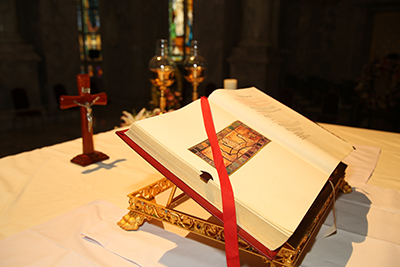
Along with the Scriptures, the Catholic Church holds traditio, literally, “the handing on” as also Sacred and Spirit-inspired. Tradition (with a capital “T”) helps us to understand Scripture and to proclaim some of our most basic teachings. The doctrine of Mary’s Assumption is based on what is called a theological conclusion because of other indirect references to it in the Scriptures.
For example, at the Annunciation (celebrated March 25th, nine months before December 25th), the Angel Gabriel declared Mary to be “full of Grace” and “God’s highly favored daughter.” (Lk 1:28) Mary conceived Jesus, the Son of God, by the power of the Holy Spirit as a consequence of accepting God’s plan for her. Further, when Mary visited her cousin Elizabeth, who herself was pregnant with John the Baptist, she addressed Mary with the words, “Who am I that the mother of my Lord should come to me?” (Lk 1:42).
All these biblical statements led the Church to conclude that because of her role as Mother of the Messiah, Mary would be preserved from original sin and its consequences. Her freedom from sin was accomplished by reason of Jesus’ foreseen redemptive death on the cross. As such it would not be possible for Mary, whose womb carried the Son of God, to suffer the corruption of the body that all people experience after death.
In Munificentissimus Deus (item 39), Pope Pius XII pointed to the Book of Genesis (3:15) as scriptural support for the dogma in terms of Mary’s victory over sin and death as also reflected in 1 Corinthians 15:54: “then shall come to pass the saying that is written, Death is swallowed up in victory.” In this passage Paul alludes to Genesis 3:15 (in addition to the primary reference of Psalms 8:6), where it is prophesied that the seed of the woman will crush Satan with his feet. Since, then, Jesus arose to Heaven to fulfill this prophecy, it follows that the woman would have a similar end, since she shared this enmity with Satan.
The Pope also mentioned Psalm 132, a liturgical psalm commemorating the return of the Ark of God to Jerusalem and lamenting its subsequent loss. The second half of the psalm says that the loss will be recompensed in the New Covenant, and so it is hopefully prayed, “Arise, O Lord, into thy resting place: thou and the ark, which thou hast sanctified.” (v. 8) Since the Church sees this New Covenant ark in Mary, it understands that she was taken into Heaven in the same manner as the Lord – that is, body and soul.
Finally, he mentioned in the next paragraph “that woman clothed with the sun [Revelation 12:1–2] whom John the Apostle contemplated on the Island of Patmos” as support for the doctrine.
Did Mary Actually Die?
But that brings up another point. What is death? We see it as the end of a person’s life when the body disintegrates into dust later to be resurrected at the Last Judgment. But death is also a passage from one state of life (on earth) to another state of existence (in eternity). The Church has not said whether Mary died or not. It says only that Mary made the transition from this temporal life into eternity with God. The fact that Jesus himself died on the cross would not exclude Mary’s dying, and, in fact, is an argument for some that Mary experienced death herself in imitation of her son. We just don’t know. The significant issue is that, like Jesus, her body did not suffer corruption.
Source:
The Solemnity of the Assumption of the Blessed Virgin Mary
Assumption Day in Luxembourg in 2024
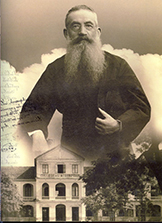
For the Congregation of the Montfort Brothers of St. Gabriel in Thailand, Rev. F. Colombet took on the responsibility to build a college (School) in 1885. As a professed urbanite, he was driven to erect proper buildings. “But where to find the required funds? For if Rev. Colombet built, he would build grandly. He threw in the whole of his patrimony, and went a begging for the balance.
Their Majesties graciously patronized his subscription List; the Foreign Residents and a great number of Siamese Nobles also came to his help; and the foundation-stone of the present College(Assumption College, Bangrak) was laid by H.R.H. Prince Vajirunhis, the young Crown-Prince of Siam, on the 15th of August 1887.
(Source:The Sketch, A History of the Brothers of St. Gabriel in Thailand, Year 2000).
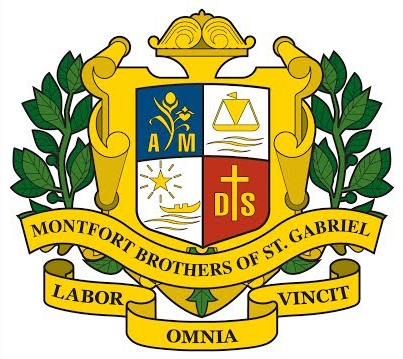
The Montfort Brothers of St. Gabriel ever since their founder lived and professed his Charism, has a deep devotion to Mary, the Mother of God for which St. Louis Marie de Montfort became well known in his devotion-true-devotion to Mary. In Thailand, having inherited a mission to run a diocesan institution named “Assumption,” the Brothers each year mark Assumption Day as the day of the feast of their institutions, many of which are named Assumption.
AU Celebration of Assumption Day and Crowning Ceremony
First organized AU Assumption Day was organized on 15 August 2001 to honour “The Seat of Wisdom” The Holy Mass, performed in St. Louis Marie de Montfort Church, and the Crowning of the Virgin Mary, in front of the Cathedral of Learning, Suvarnabhumi Campus, solemnized the occasion and marked a beginning of the Feast of the Assumption Day tradition to be celebrated with devotion every year.
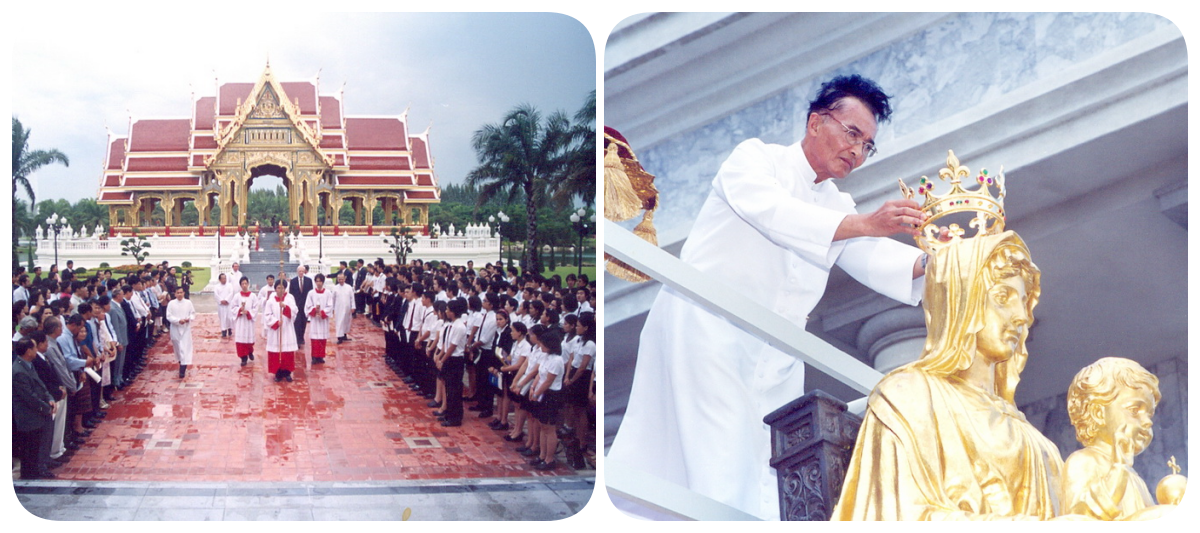
The Seat of Wisdom
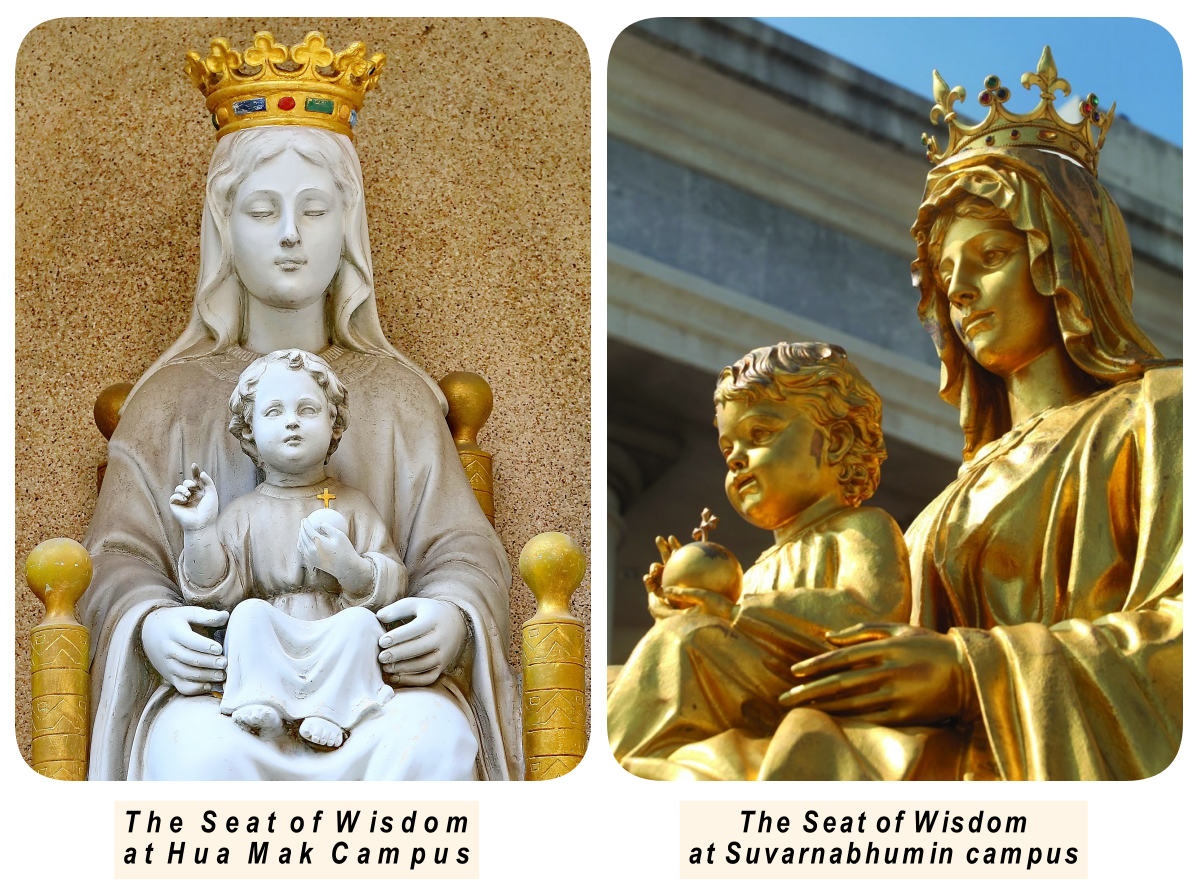
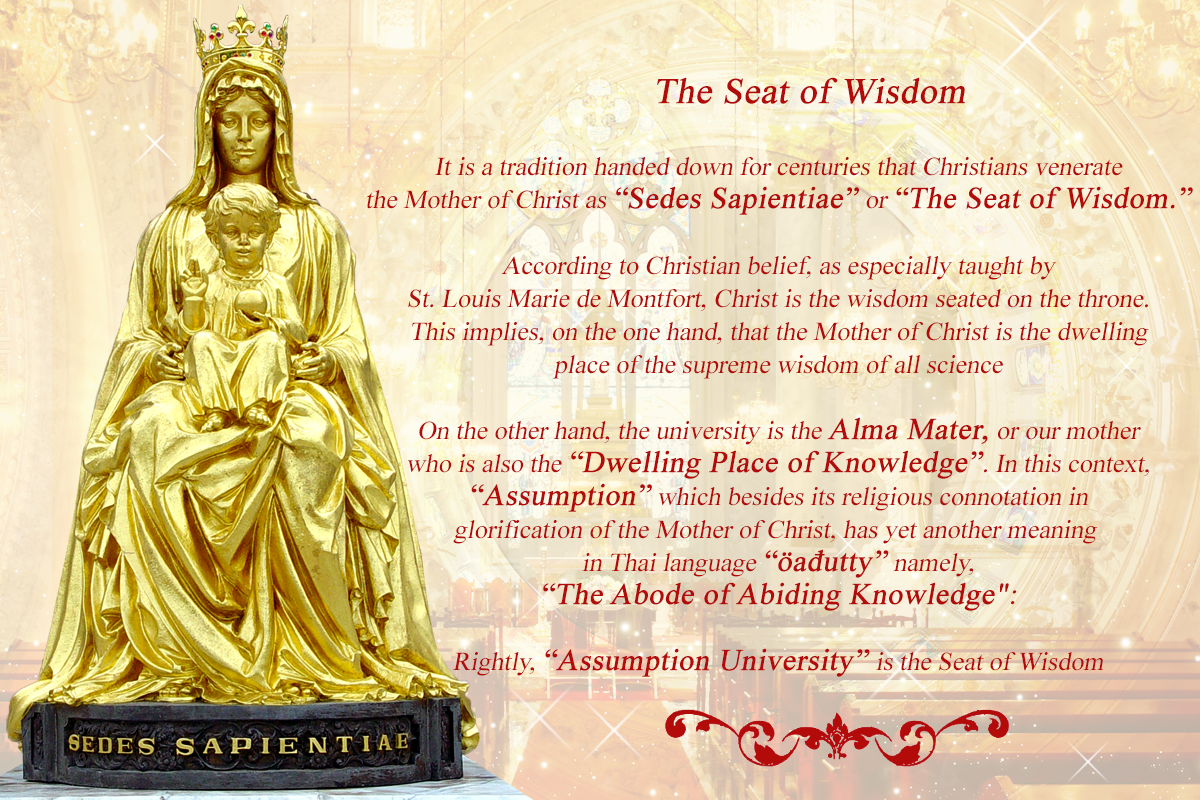
In keeping with the Congregation’s devotion to Mary on August 15, Assumption Day is observed in a solemn and grand way at the University’s Suvarnabhumi campus. The celebrations begin with the Holy Mass, commemorating one of the Catholic core beliefs, the Assumption of the Blessed Virgin Mary into Heaven, body and soul.
For Assumption University of Thailand according to Rev. Francis Anastasia (Fr. Nash), Former Director of the ABAC-Loyola Exchange program at Assumption University, (1992-2007) “as Mary’s university, our education is best marked by caring, sharing and enlivening the young minds that come to us for intellectual nourishment.”
As culmination of the spiritual aspect of the celebration, the President of Assumption University Crowns the statue of the Virgin Mary, “Sed es Sapientiae” (a tradition initiated by Rev. Brother Prathip Martin Komolmas the then President of Assumption University) to the backdrop of the stately Cathedral of Learning, the Placid skies above, the Assumption School (Samutprakarn) brass band’s rendition of hymnal music and the Assumption University choir leading the assembly with votive hymns to Mary.
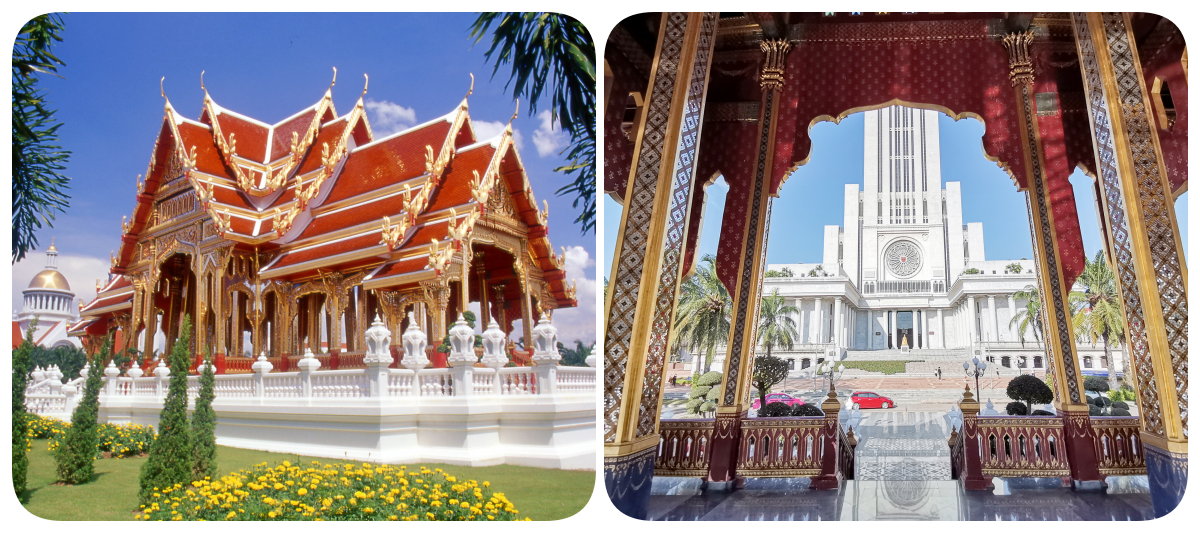
The University community then converges upon the Sala Thai, the Thai Pavilion, Chaturamuk Paijit, so named by HRH Princess Sirindhorn, overlooking the picturesque lakes of the Suvarnabhumi campus to partake in refreshments hosted by the university. The aura of spiritual graces descend as the guests of the university, faculty, staff and students interact with each other in pleasantries, befitting the occasion.
(Mr. Glen V. Chatelier, Director, Office of International Affairs, August 9, 2021)
